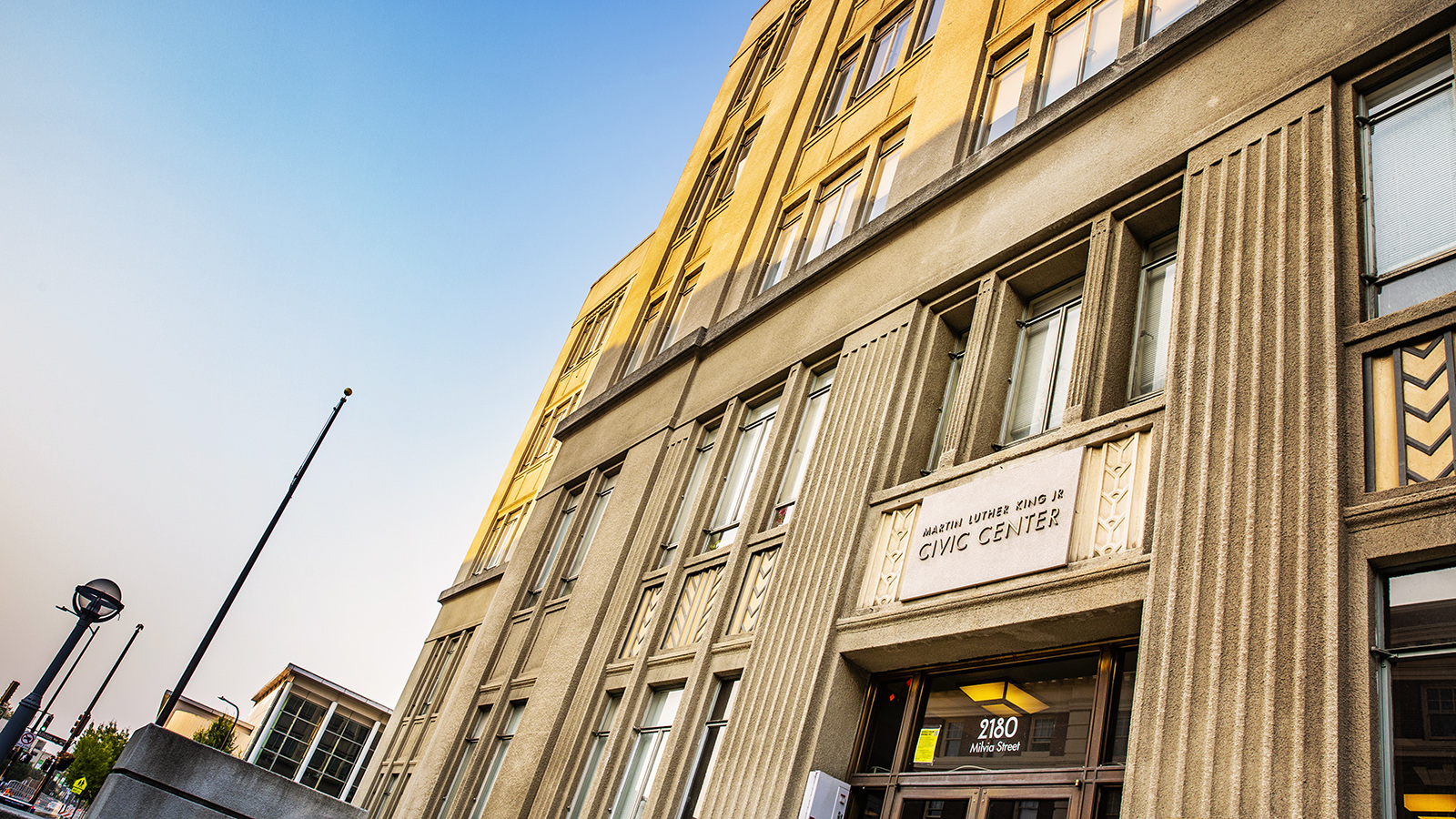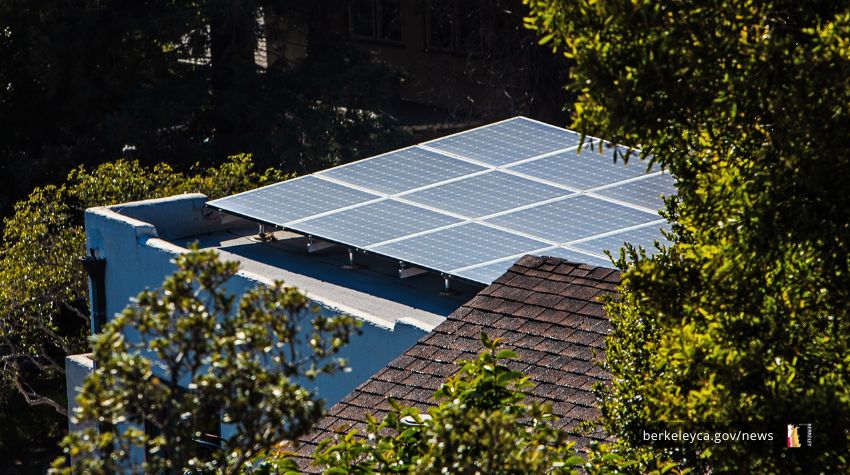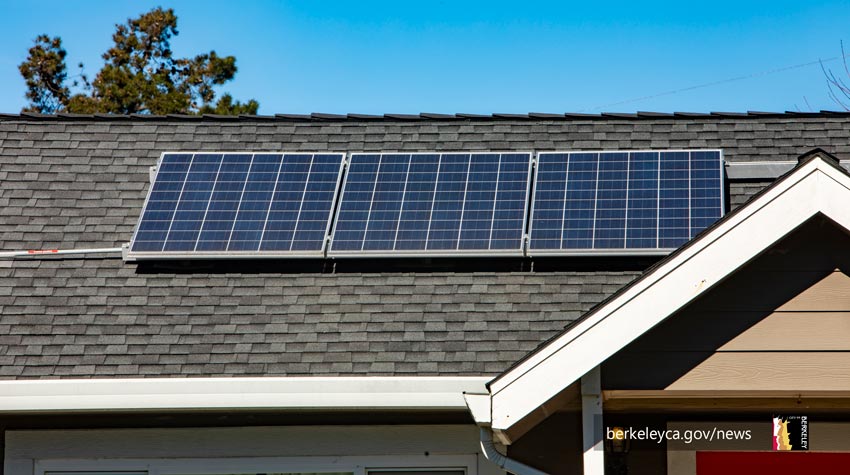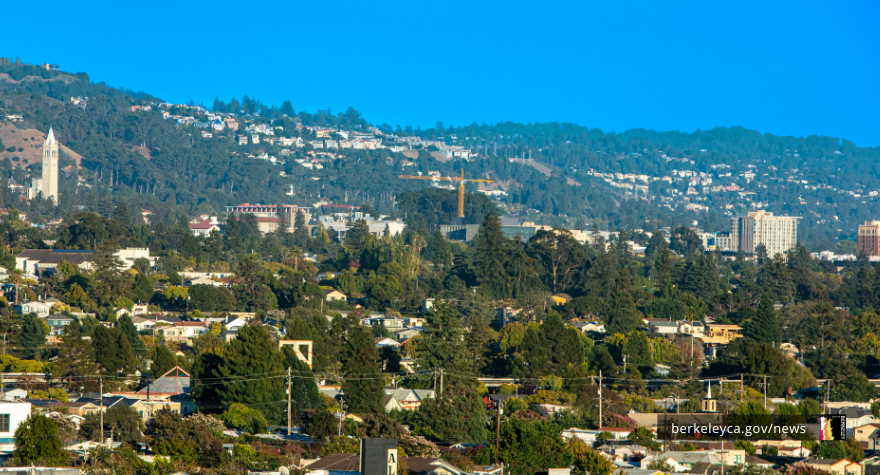Help shape Berkeley's path towards an all-electric future

Berkeley, California (Thursday, April 22, 2021) - Help us develop an equitable plan to get natural gas, which causes harmful indoor air pollution and exacerbates climate change, out of Berkeley’s homes and businesses. This process, known as electrification, switches out polluting gas appliances for efficient, all-electric alternatives powered by clean electricity.
We're taking comments on our Draft Berkeley Existing Buildings Electrification Strategy through May 15. You can share feedback via an online survey or by emailing electric@cityofberkeley.info.
Give input at virtual May 4 community meeting
Learn more about the benefits of electrification and Berkeley's plans to transition our community off natural gas at an online community meeting in May, featuring City staff and members of the Berkeley Climate Action Coalition.
Getting buildings off gas - Berkeley electrification community meeting
Tuesday, May 4, 7pm
Register online to attend
At this event, you'll have the opportunity to talk with local residents who are in process of electrifying their homes and to share feedback about the draft electrification strategy. There will be plenty of time for questions.
All-electric buildings provide many benefits
All-electric buildings are more healthy, safe, resilient, and comfortable than fossil-fuel powered buildings. Burning gas in household appliances produces harmful indoor air pollution that can exacerbate asthma and other respiratory problems.
Natural gas in homes is responsible for almost half of residential house fires, and major gas leaks and explosions – such as Aliso Canyon and San Bruno – can be devastating. Gas lines are also a dangerous risk during wildfires or earthquakes. Gas also typically takes much longer than electricity to be restored after a disaster-related outage.
When paired with solar panels and backup batteries, electric buildings can have power during grid outages. Electric buildings use air source heat pumps, an efficient technology that provides both heating and cooling, offering comfort during hot days which are increasing with climate change.
All-electric buildings can improve housing stock and advance equity
Disadvantaged and lower income residents often live in older homes that can worsen health conditions. In Berkeley, residents of color, especially children, are most affected by asthma hospitalizations.
Older buildings also tend to have inefficient appliances and higher energy bills. By electrifying these homes with efficient, high performing electric appliances, we have the opportunity to improve health and reduce energy costs for vulnerable populations.
The Berkeley Existing Buildings Electrification Strategy seeks to ensure that renters and those who struggle to afford housing are not burdened or displaced by a transition to all-electric buildings. The Strategy also seeks to ensure that everyone benefits from the City’s efforts to upgrade buildings, and that lower income residents don’t get left behind on a polluting gas system that will become more expensive as cities throughout the state transition to an all-electric future.
All-electric buildings advance the City’s climate goals
All-electric buildings also reduce the pollution that causes climate change. In Berkeley and throughout the state, fossil-fuel powered buildings are the second largest source of greenhouse gas emissions.
Methane, the key component of natural gas, is a harmful greenhouse gas that traps 80 times more heat than carbon dioxide. By transitioning buildings off natural gas to electricity, we can reduce methane leakages that occur in the natural gas system, from extraction to pipeline to our homes and businesses. As the electric grid gets cleaner each year with the addition of more renewable solar and wind energy, the carbon footprint of all-electric buildings shrinks. All-electric buildings that have rooftop solar or purchase 100% renewable electricity are already zero-emission.
Building electrification is a key strategy to reach the City’s Fossil Fuel Free and Climate Action Plan goals. Building electrification also supports the City's Strategic Plan goal to "be a global leader in addressing climate change, advancing environmental justice, and protecting the environment."
With the 2019 passage of Berkeley’s natural gas ban, the City became the first in the nation to make new construction all-electric. To date, 42 cities have now adopted policies to support a gas-free future. But new construction represents just a small percentage of Berkeley’s buildings. With the Berkeley Existing Buildings Electrification Strategy, the City identifies strategies to ensure that all buildings, and the whole community, can benefit from electrification. Learn more about this exciting plan at the May 4 community meeting, or share your input online.
Links
- Draft Berkeley Existing Buildings Electrification Strategy
- Electrification Strategy feedback form
- Online registration: Getting buildings off gas - Berkeley Electrification Community Meeting


